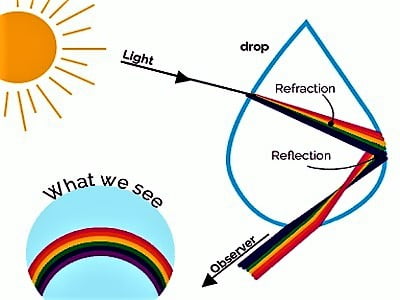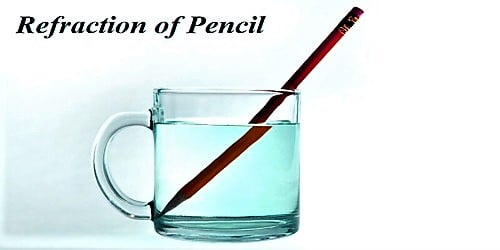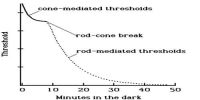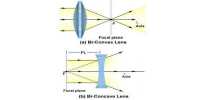Refraction has a lot of applications in optics and technology. The refraction phenomenon is regularly connected with light but can also be applied to other waves such as sound or water. A lens uses refraction to form an image of an object for many dissimilar purposes, such as magnification. The most general application of refraction is in the field of optics. A prism uses refraction to form a spectrum of colors from an occurrence ray of light. Refraction also plays a significant function in the structure of a mirage and other optical illusions. Refraction is the bending of light or sound wave or the method the light bends when entering the eye to form an image on the retina.
Uses of Refraction in our Daily Life –
There is a convex lens in our eyes. When we have seen an object, the light from the object, being refracted by the lens of the eye, forms an image on the retina. We can see the object when a real and inverted image of that object is formed on the retina. So, refraction of light helps us to see an object. There are many people who have defects in their eyes. Among them some cannot see the distant object, some cannot see near the object.
A lens uses refraction to form an image of an object for various purposes, e.g. magnification.
For the remedy of the defects, we use spectacles made by the lens of particular power. The incoming light refracted through the lens falls on our eyes and helps to see the object properly. Therefore, refraction plays an important role to see an object. By using the property of refraction of light we can take photographs with a camera, we can see very small object magnifying it under the microscope and see the distant object by telescope. The optical fiber that we use in the field of health and telecommunication is also the contribution of refraction of light. There are fish aquariums in many of our houses.
Refraction has many applications in optics and technology –
Refraction is used by the lens to form an image of an object for many dissimilar purposes, such as magnification. A spectrum of colors from an incident beam of light is formed by the prism using refraction. Rainbows have color because of refraction in a way related to a prism. The rainbow results when light waves encounter drops of water. There is also reflection involved and a full clarification is more complicated than the case of a prism. The formation of a mirage and other optical illusions is also because of refraction.

Fig: Rainbow results when light waves encounter drops of water
- A prism uses refraction to form a spectrum of colors from an incident beam of light.
- Refraction is responsible for the ability of the cornea and lens of the eye to form a real image on the retina.
- Spectacles are worn by people with defects of vision use refraction for providing correct vision.
- Refraction is responsible for the formation of a mirage and other optical illusions.
- When you drink from a glass you can see that when you put a straw in it is bent, but really it’s when the light goes through water and refracts as it bounces from the straw to your eye.
- Refraction is used in the working of telescopes, microscopes, peepholes of house doors, cameras, movie projectors, magnifying glasses, etc.
If we keep some colorful fish in the aquarium we can enjoy their interesting movement. The light from the fish coming through the water at first falls on the glass of the aquarium. After the refraction of light through the glass, the light reaches our eyes. Therefore it is also a contribution of refraction of light.














